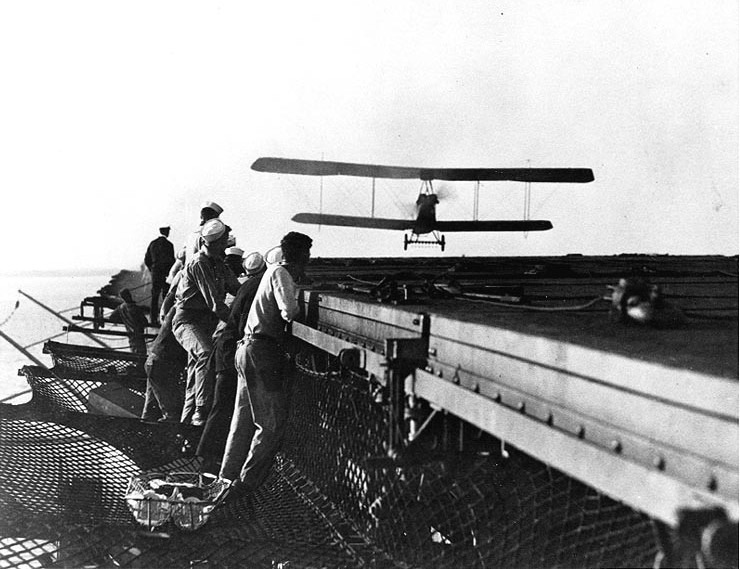By David F. Winkler, Ph.D.
Staff Historian
Just over a century ago, on October 26, Langley, departed from a York River anchorage at 7:15 a.m., and steamed into the Chesapeake Bay off the “Tail of the Shoe” shoal just inside Cape Henry. Having taken over as the officer of the deck for the 8 till noon watch, Ensign Tate recorded the morning events noting “At 10:50 started maneuvering ship to land plane, at various courses and speeds.” With that, Langley turned into a 30 mile-per-hour northeast breeze that Chief Electrician Joseph Weller termed as “very rocky.”. Tate then recorded: “At 10:59 plane A-606 piloted by Chevy circling ship.” Flying over Langley’s stern in an Aeromarine 39-B, Lt. Cdr, Godfrey de Courcelles Chevalier looked down on the preparations for his landing. A red flag had been installed on the ship’s port quarter keeping Naval Aviator No. 7 in the air. Finally, a white flag appeared in its place, signaling Langley’s air department head to approach. The plane caught the first cross wire and latched on to four or five of the fore and aft wires. Tate later recalled: “he came in very nicely and hit the gear – pies and fiddle bridges flew in all directions and, at the end of the run, the plane nosed down and damaged the prop.” Weller’s diary entry confirmed Tate’s recollection, concluding: “The weight at the tail threw the nose down causing the breaking of the propeller and standing on end.” The man who would get credit for “the first” landing on an American aircraft carrier, stepped out of his cockpit to a throng of well-wishers. With his mission accomplished, Langley’s C.O. Capt. S.H.R. “Stiffy” Doyle assumed the conn and brought Langley back over to the Naval Operating Base in Norfolk.
Tragically, Lieutenant Commander Chevalier would pass away less than three weeks later in a hospital bed due to injuries sustained two-days earlier when his Vought VE-7 fell from the sky due to engine failure following loss of fuel.


